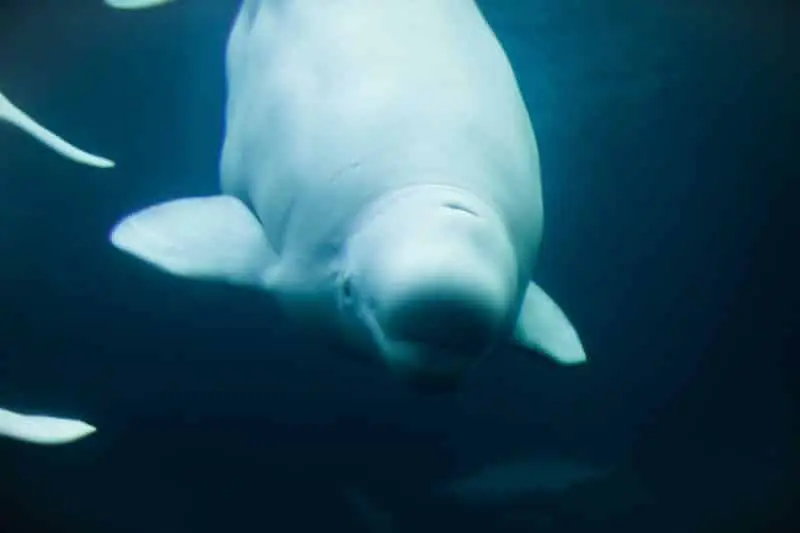Belugas whales, also known as white whales- because of their unusual bright white color- are among the most familiar and easily distinguishable whales in the Arctic.
This color develops over time as calves are born grey or sometimes even brown and only fades into white as they become sexually mature around five years of age. Belugas are one of the many endagered whales inside our oceans.
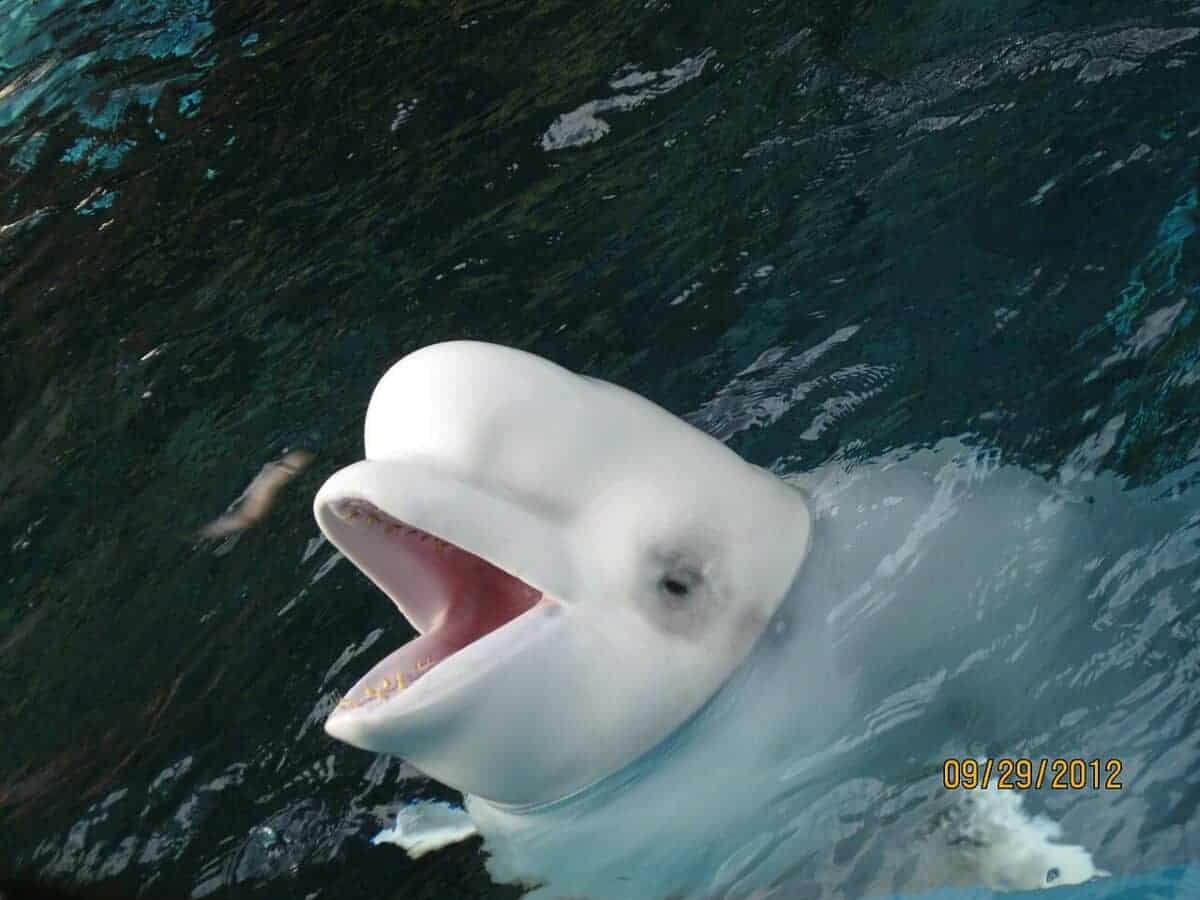
Key Points
| Topic | Key Points |
|---|---|
| Appearance and Behavior | – Belugas start off as dark grey calves and lighten in color as they age. |
| – They lack a pronounced beak and have a round, flexible “melon” on their heads. | |
| – Belugas have 36 to 40 teeth in both their upper and lower jaws. | |
| – Their neck vertebrae are not fused, allowing them to nod and move their heads easily. | |
| – Belugas have a thick layer of fat for insulation and energy storage. | |
| – They live in pods and are vocal communicators, using clicks, whistles, and clangs. | |
| Population Range | – Belugas are found in Arctic and subarctic waters, migrating when the sea freezes over. |
| – They are preyed upon by polar bears and killer whales. | |
| – Some populations have been severely affected by hunting and commercial fishing. | |
| Diet | – Belugas feed on fish, crustaceans, and worms. |
| – They swallow their food whole without chewing. | |
| Fun Facts | – Belugas can grow up to 16 feet long and weigh up to 3,150 pounds. |
| – They can live up to 50 years. | |
| – Belugas can dive over 3,280 feet and stay submerged for up to 25 minutes. | |
| – They shed their skin by rubbing against gravel. | |
| – Belugas are known for their vocalizations and can mimic a variety of sounds. | |
| Habitat and Threats | – Belugas inhabit Arctic and subarctic waters. |
| – They are threatened by habitat degradation, pollution, food limitations, and strandings. | |
| – Contaminants accumulate in their bodies and can harm their immune and reproductive systems. | |
| – Overfishing, climate change, and human activities impact their food availability. | |
| Hudson Bay | – Hudson Bay in Canada is a popular spot to observe beluga whales. |
| – The Western Hudson Bay attracts around 57,000 belugas during the summer. | |
| – Belugas migrate there to give birth, nurse their young, and feed. | |
| Linguistic Communication | – The story of Noc, a beluga whale, showcases their ability to imitate human sounds and communicate with humans. |
Appearance and Behaviour
| Characteristic | Description |
|---|---|
| Size | Adults range from 13 to 20 feet (4-6 m) in length |
| Weight | Adults weigh around 1,300 to 3,500 pounds (600-1,600 kg) |
| Lifespan | Average of 35 to 50 years |
| Coloration | Distinctive white or light gray coloration |
| Melon | Unique melon-shaped forehead used for echolocation and communication |
| Vocalizations | Known as the “canaries of the sea” for their varied vocal repertoire |
| Habitat | Found in Arctic and sub-Arctic waters |
| Social Behavior | Highly social, often found in pods or groups |
| Conservation Status | Near Threatened |
As Beluga whales grow, their initially dark grey skin lightens, eventually turning white upon reaching maturity. They have a distinctive round, flexible “melon” on their heads that helps control their vocalizations, including echolocation “clicks.” Belugas, categorized as toothed whales, have around 36 to 40 teeth in both their upper and lower jawbones.
The genus name Delphinapterus translates to “dolphin without a fin.” Instead of a dorsal fin, belugas have a challenging dorsal ridge, allowing them to swim easily under ice floes (floating ice sheets).They, hoewever, have a few differences with the oceans friendly dolphins. Unlike other whales and dolphins, their neck vertebrae are not fused, so belugas can quickly nod and move their heads from side to side.
Beluga whales are covered with a thick layer of fat that accounts for up to 40 percent of their weight. The fat keeps them warm in the Arctic waters and stores energy as they can go for extended periods without food. Some beluga populations shed their outer layer of skin each summer during an annual molt. They rub against coarse gravel in shallow waters to help remove the old, yellowed skin layer.
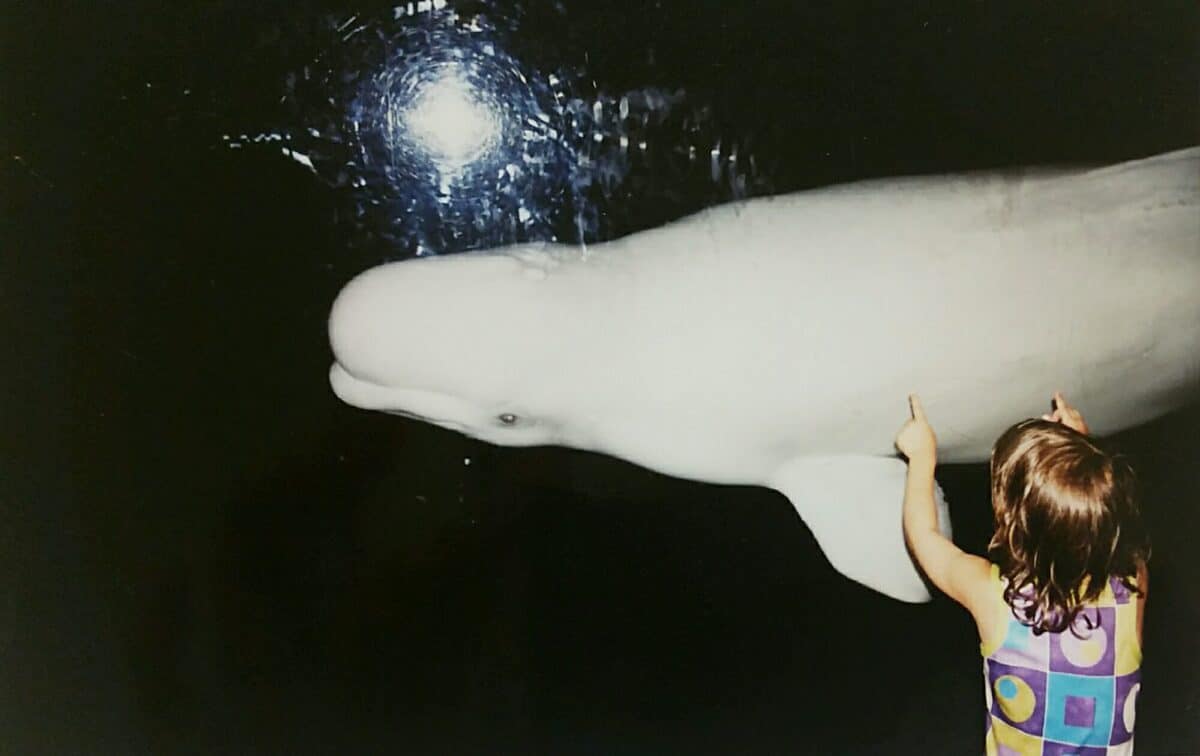
Beluga whales typically reside in close-knit groups called pods. They’re highly social creatures and use a diverse range of clicks, whistles, and clangs to communicate. These intelligent whales are adept at mimicking various sounds, including those generated by increased noise pollution from cargo ships and boats in their habitats. They’ve been observed attempting to replicate these noises as part of their vocal range.
The Beluga whales generate sounds by using air pressure in the nasal chambers located within their melon, an organ for echolocation positioned at the front of their heads. They then expel the pressurized air through specific “phonic lips” situated above each opening. As these lips vibrate, they produce the distinct echolocation clicks, pulse bursts, and chirp-like whistles and squeaks that are typical of the whale’s communication repertoire.
Population Range and Migration
Beluga whales are frequently sighted in the coastal waters of the Arctic Ocean, although they also inhabit subarctic regions. During the freezing of the Arctic sea, these whales migrate in sizable groups towards southern areas. Unfortunately, some of these animals become trapped by the ice, leading to their demise. They serve as prey for various predators including polar bears, killer whales, and indigenous Arctic communities. Furthermore, belugas face hunting pressure from both indigenous communities in the north and commercial fisheries, which has notably impacted certain populations like those in the Gulf of St. Lawrence.
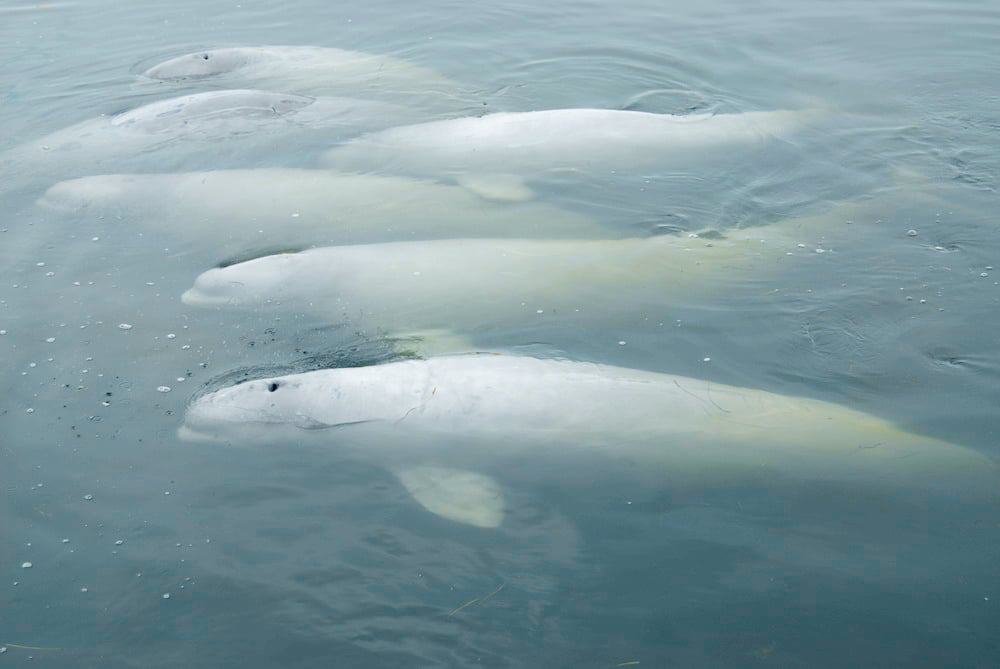
What do Beluga Whales eat?
Beluga whales have a diverse diet that includes fish, crustaceans, and worms. They consume various types of fish like cod, herring, salmon, as well as squid, shrimp, and crabs. Despite having teeth, belugas don’t chew their food; instead, they swallow it whole.
9 Fun Facts About Beluga Whales
- On average, Beluga whales reach lengths of up to 16 feet (4.8 m) and weigh around 3,150 pounds (1.4 metric tons).
- These remarkable creatures boast a lifespan of up to 50 years.
- Beluga whales are born with a dark gray coloration that transitions to lighter shades as they age, culminating in a white hue upon reaching sexual maturity.
- Demonstrating impressive diving abilities, Beluga whales can descend more than 3,280 feet (1,000 m) into the depths and remain submerged for up to 25 minutes.
- Beluga whales primarily inhabit Arctic waters, occasionally exploring freshwater rivers.
- Each summer, Beluga whales undergo a skin shedding process by rubbing against coarse gravel.
- Unlike other whale species, Beluga whales lack fused neck vertebrae, granting them exceptional head mobility in various directions.
- These whales possess bulbous and flexible foreheads known as “melons,” aiding in sound production and facial expressions.
- These whales are referred to as the “canaries of the sea,” and exhibit diverse vocalizations, including clicks, whistles and chirps.
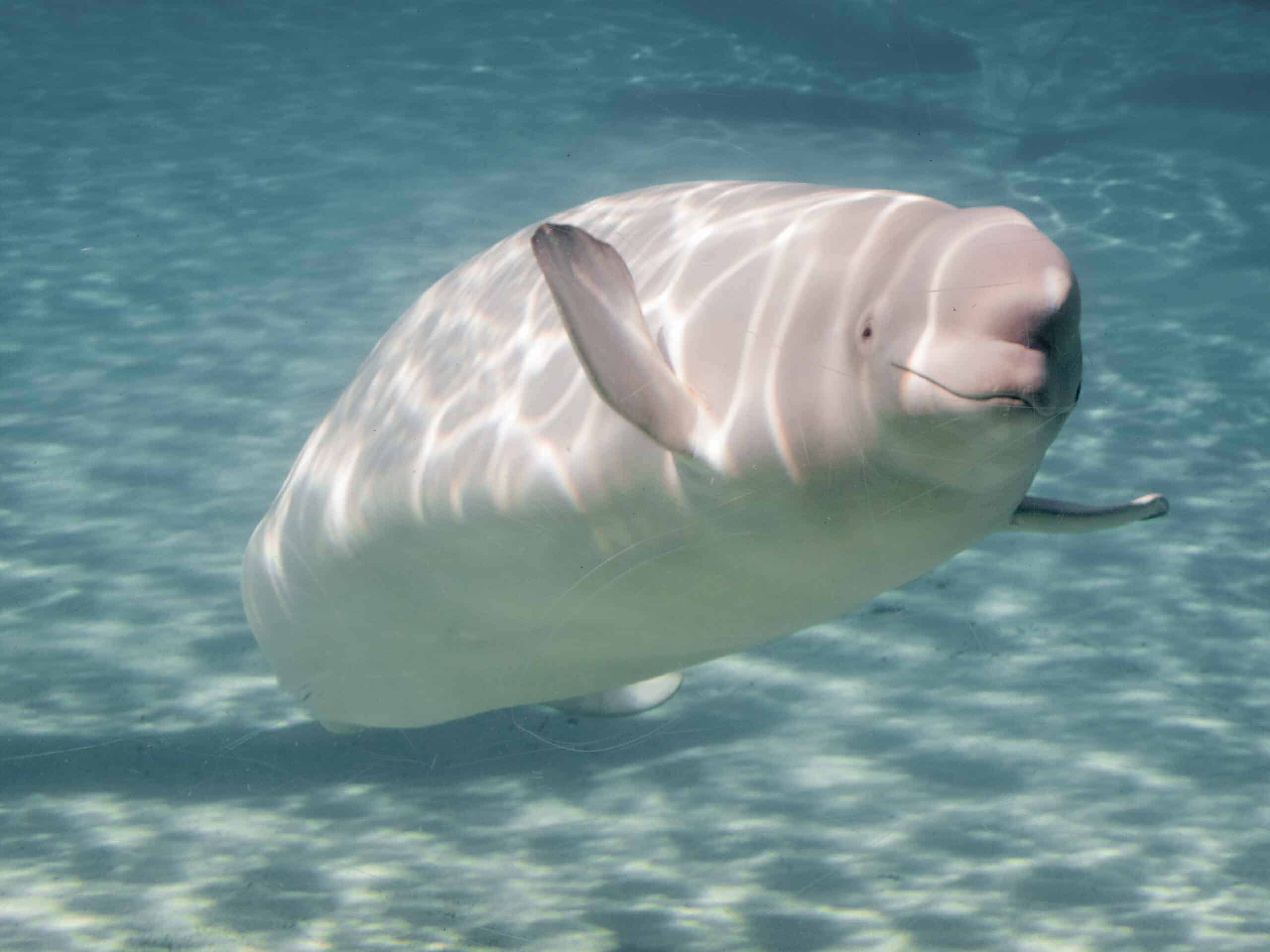
Where do beluga whales live?
Beluga whales inhabit the chilly waters of the Arctic and sub-Arctic regions in the northern hemisphere. While some groups, like those in Cook Inlet, Alaska, remain in one place, their overall population has significantly decreased, leading to a ‘Critically Endangered’ status. Other beluga whales migrate seasonally, traveling hundreds of miles to reach preferred feeding and breeding spots, with some even venturing far upriver for breeding.
Lifespan & Reproduction
Like tree rings that can be used to age a tree, beluga teeth acquire a “growth layer group” (GLG) each year they age. The oldest beluga on record had 80 GLGs, though this may be an underestimate of the whale’s actual age. The oldest Cook Inlet beluga whale had 49 GLGs.
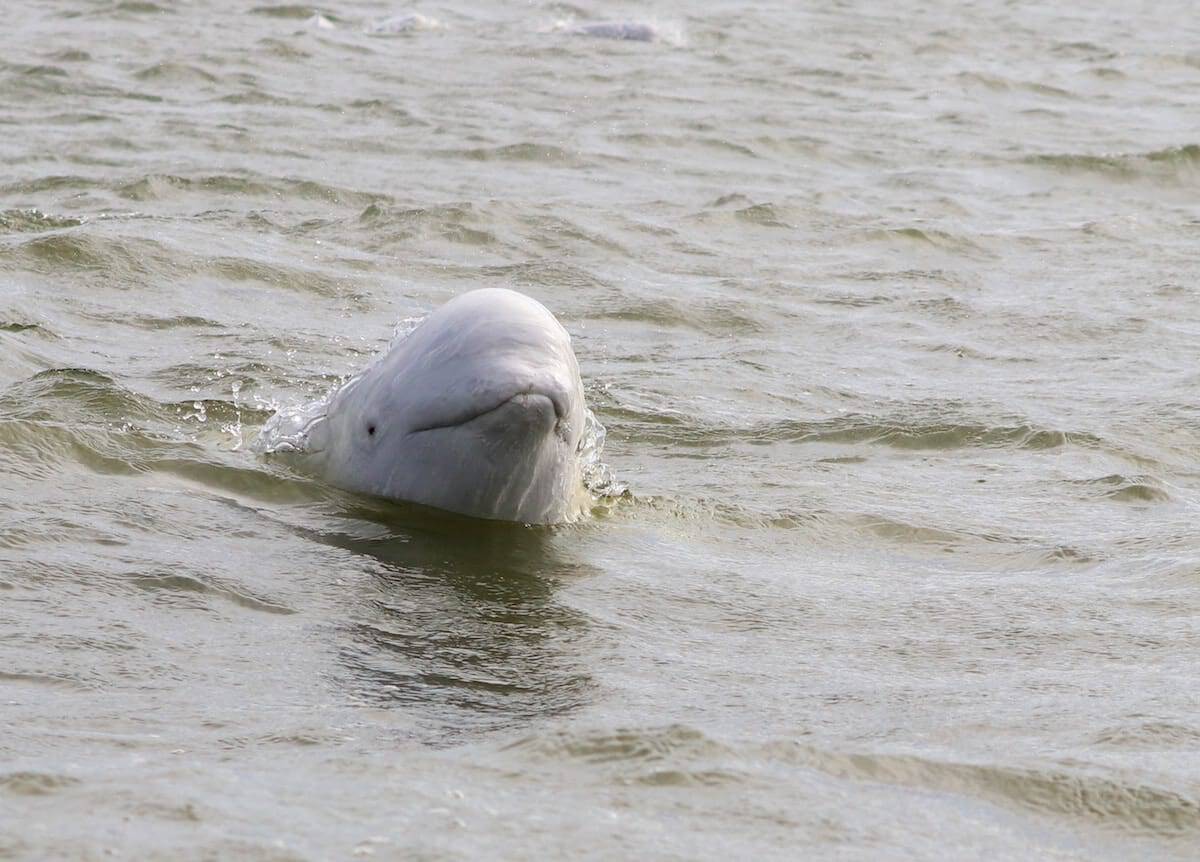
Beluga whales are believed to breed around late winter and early spring. Depending on the population, this may occur during the migration or in their wintering grounds. Females reach sexual maturity when they are about 9 to 14, and males when they are slightly older. The gestation period usually lasts 15 months; calves nurse for two years and females give birth every 2 to 3 years.
Pregnancy rates showed signs of decline after age 40 in the eastern Chukchi Sea females and around 46 in northwest Alaska. Notably, however, the most senior female in the northwest Alaska sample, at age 70, was carrying a near-term fetus. The oldest female beluga whale from Cook Inlet was 47 years old and appeared to have recently given birth.
Belugas generally give birth during summer in areas where the water is relatively warm, as newborn calves lack a thick blubber layer to protect them from cold water. Calves benefit from the warmer water of shallow tidal flats and estuaries.
Threats
Beluga whale populations are exposed to a variety of stressors and threats, including pollution (e.g., heavy metals, chemicals, trash), shipping, energy exploration, commercial fishing, extreme weather events, strandings, predation from killer whales, subsistence harvesting, and other types of human disturbance such as underwater noise. The Cook Inlet population faces additional threats because of its proximity to the most densely populated area of Alaska (Anchorage) during the summer season.
Habitat Degradation
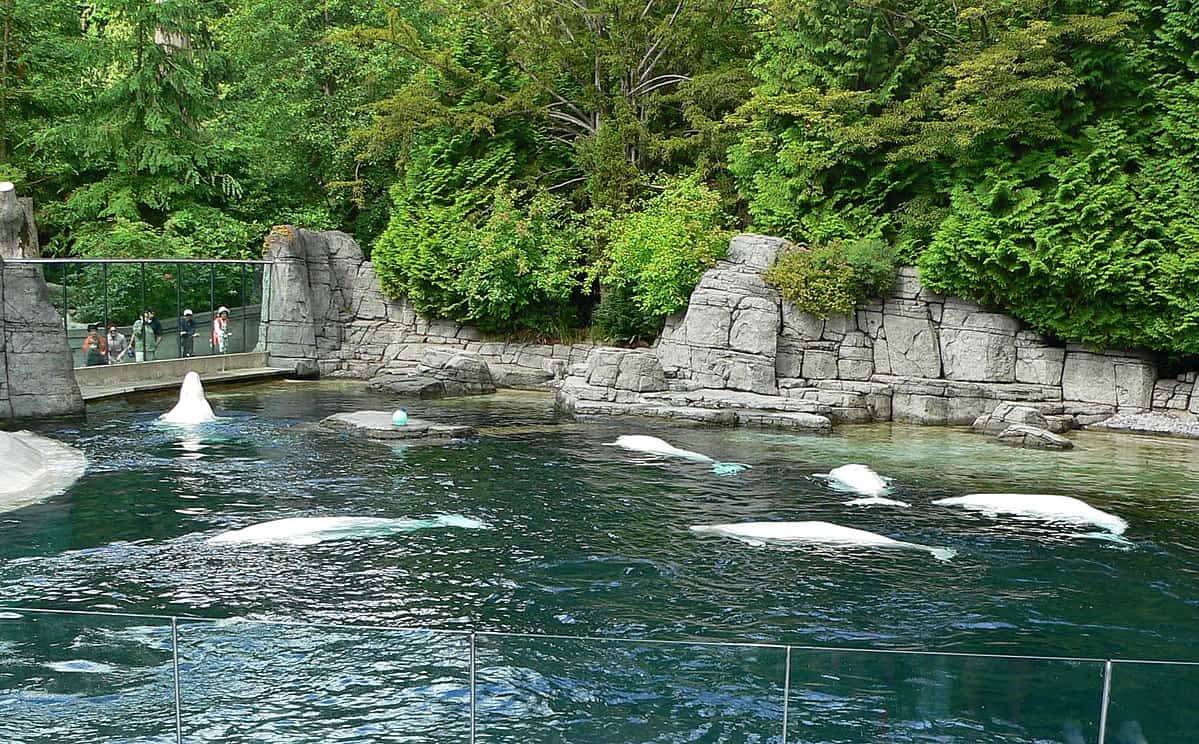
Beluga whales are susceptible to habitat destruction and degradation. This can range from physical barriers limiting access to necessary migration, breeding, feeding, or calving areas to activities that destroy or degrade their habitats. Physical barriers may include shoreline and offshore development (oil and gas exploration, dredging, pile driving) and increased boat traffic. Contaminant releases may also degrade habitat.
Contaminants
Various contaminants find their way into ocean waters through multiple channels like oil and gas activities, urban runoff, industrial processes, and wastewater discharges. When these substances enter the environment, they progress through the food chain, ultimately concentrating in top predators like beluga whales. Due to their extended lifespan and fat reserves, belugas store these contaminants in their bodies, posing risks to their immune and reproductive functions.
Food Limitations
Overfishing, habitat changes, and the impacts of climate change can decrease the amount of food available to beluga whales. Without enough prey, they might experience reduced reproductive and increased mortality rates. Understanding the potential for food limitations to hinder population recovery is especially important for Cook Inlet beluga whales because they live in an area with high human activity.
Strandings
Live strandings occur when marine mammals become “beached” or stuck in shallow water. The cause of most stranding cases is unknown. Belugas may strand when molting (to avoid predation or other threats, such as noise and vessel traffic), chasing prey or suffering from injuries or disease. Unlike other whales and dolphins, healthy belugas that live strand can usually refloat and swim to deeper water during the next high tide. Unfortunately, belugas have died after stranding on their sides and inhaling muddy water. Larger belugas with compromised immune systems also may not survive, leaving through a tidal cycle.
Ocean Noise
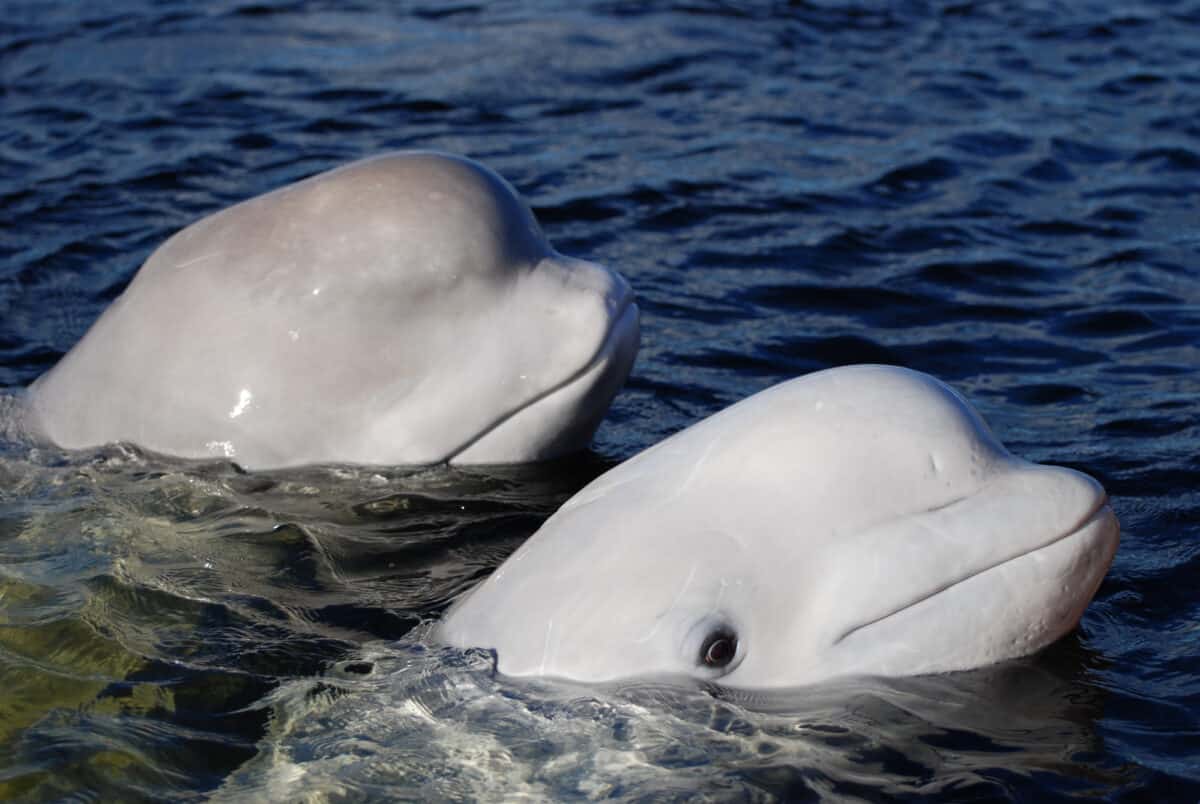
Underwater noise pollution interrupts the expected behavior of beluga whales, which rely on sound to communicate and echolocate. If loud enough, noise can cause permanent or temporary hearing loss. This is of particular concern for the Cook Inlet population, which inhabits an area with high vessel traffic, oil and gas exploration and development, dredging and pile-driving, military operations, and other noise-making anthropogenic (human-caused) activities.
Hudson Bay: Canada
The WWF has shared an account from a popular Beluga spot in Hudson Bay in Canada and recalls:
“Our small raft bobs in the water of Manitoba’s Churchill River, where the summer-warmed river meets the calmer Hudson Bay. All around us, a feeding frenzy is underway.
As dozens and dozens of beluga whales feast on fish, our group finds it hard to contain our excitement. We point to a white-and-gray pair—mother and calf—that swims directly toward us and then plunges deeper. Suddenly, an adult appears two feet away, and we all exclaim. If whale-watching involves squinting into binoculars at the fleeting sight of a tail, this must be whale-communing.
Our small group came to Churchill, the “Polar Bear Capital of the World,” in July. In a few months, thousands of wildlife lovers will arrive to see the largest concentration of polar bears as they wait for the bay to freeze. But right now, these waters are home to more than 3,000 belugas. The Western Hudson Bay attracts around 57,000 belugas each summer.
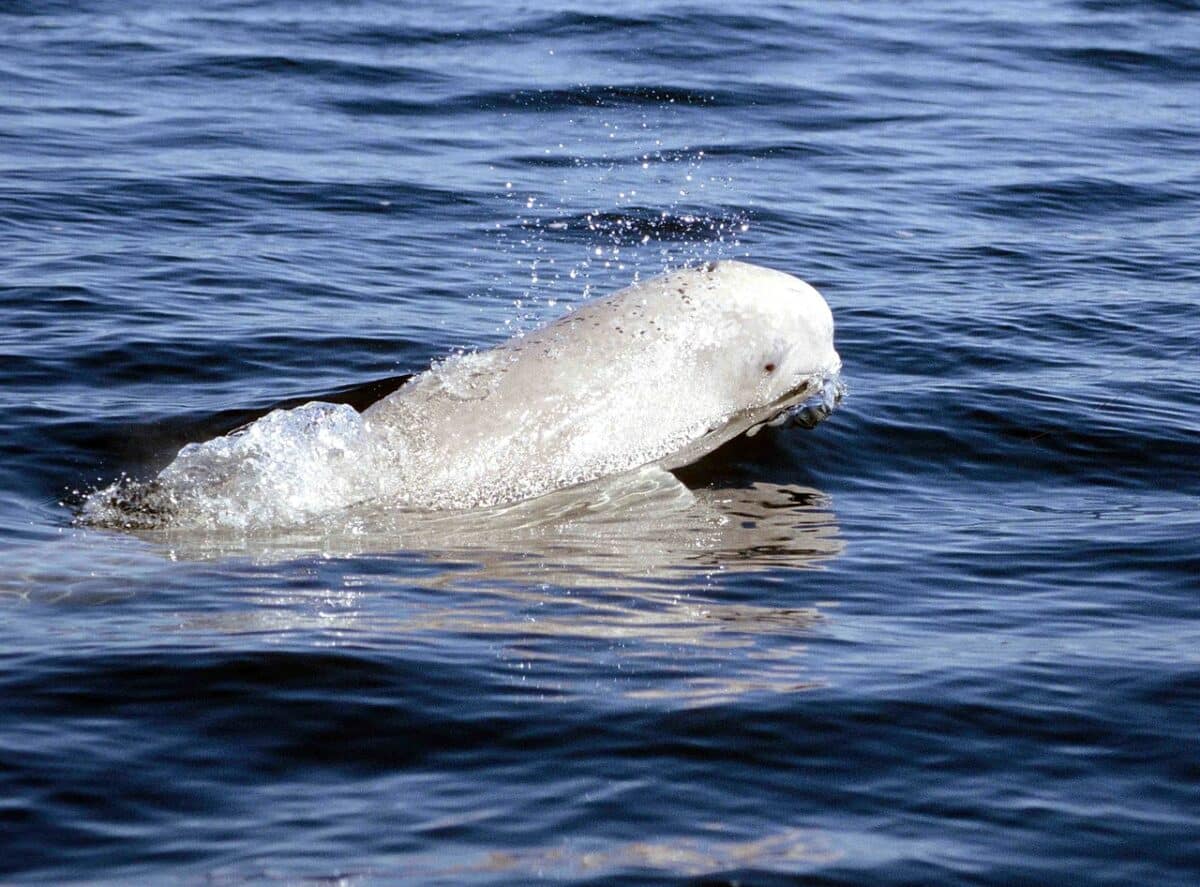
These sociable whales, up to 15 feet long, migrate here every summer to give birth, nurse their young, and feed in productive waters. Like the closely related narwhal, they lack a dorsal fin, an adaptation that helps conserve heat in their arctic home. The beluga’s flexible neck allows the head to move up and down and from side to side. And a bulbous adjustable forehead, called a melon, allows the beluga to make facial expressions and sounds.
Later we come across another pod of belugas, and our boat driver lowers a hydrophone a few feet below the water’s surface. The concert begins, and we learn why belugas are called canaries of the sea.
We hear a symphony of chirps, clicks, squeaks, whistles, squeals, and moos; it’s an impressive, wide-ranging repertoire. So many belugas join the chorus that it’s impossible to distinguish one message from another. But, of course, we are not the intended audience.
While these communicative whales seem fine here, climate change affects other parts of the belugas’ arctic home. Melting sea ice means more open water for increased shipping, marine construction, and oil and gas exploration. These activities cause underwater noise pollution, which interferes with beluga communication and could cause them to have difficulty navigating, finding food and mates, and detecting nearby predators.
After my front-row seat at the beluga concert, I return home, inspired to protect these fantastic whales and vulnerable wildlife everywhere.”
The WWF also offers this as a fantastic trip. One could consider booking through them if interested!
The Whale Who Tried to Bridge the Linguistic Divide Between Animals and Humans
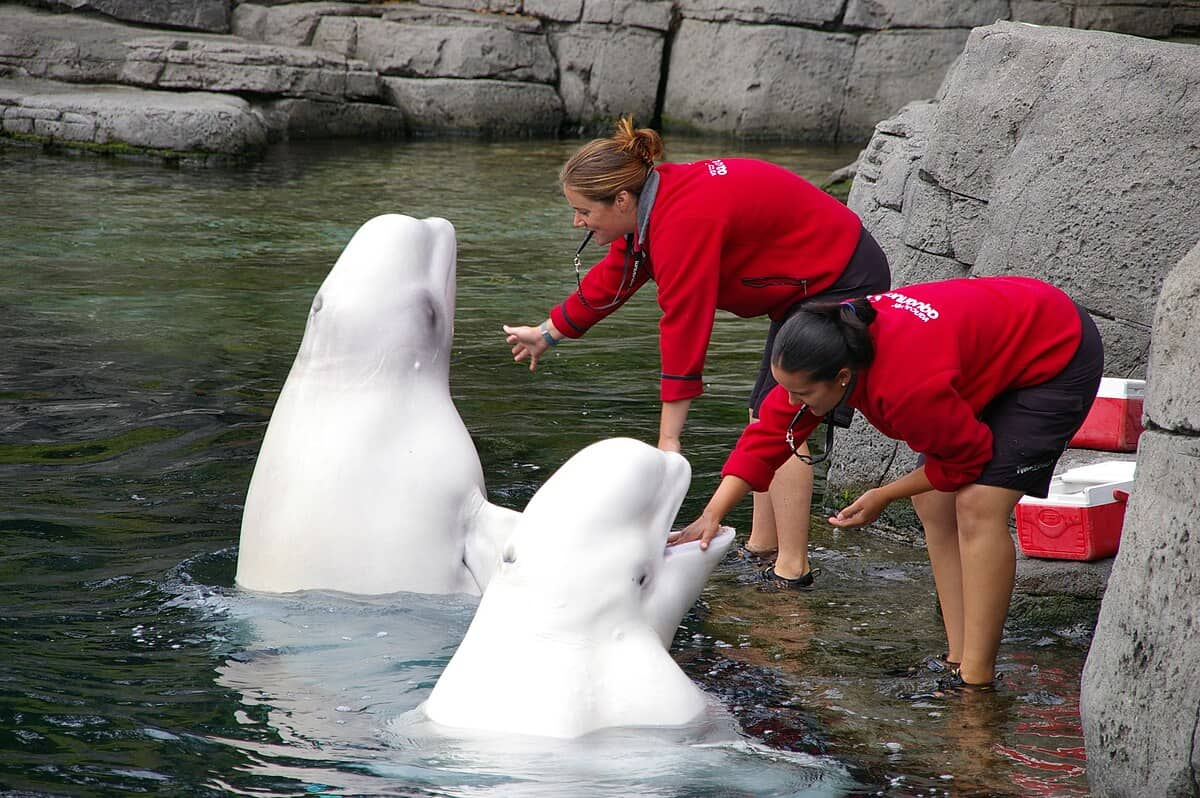
Before humans, the earth’s oceans were filled with diverse whale songs: humpbacks’ courting songs, sperm whales’ clicking dialects, Pacific grays’ rhythmic sounds, and the low-octave, long-distance communications of blue and fin whales, along with the constant Arctic chatter of belugas. These natural sounds are now overshadowed by human noise.
However, a beluga named Noc (pronounced “nosee”) stood out by communicating through the internet. Noc’s story highlights a captive beluga’s ability to connect with humans, offering insight into his species.
If you’re intrigued about how the very detailed and technical story unfolds, look here!
Summary of Beluga Whales
Beluga whales are marveled for being fascinating beings; the white whales of the ocean are very playful and curious creatures. Be sure you are fortunate if you ever see one in the wild! And if even one is in captivity, question its well-being there and avoid supporting places that endorse such cruelty!
If you’ve enjoyed reading about these whales, look at our other blogs about whales! Like Where to see Sperm Whales and our complete overview of whale sightings!
Frequently asked Questions (FAQs)
Q: Where can Beluga whales be found?
A: Beluga whales are primarily found in the Arctic Ocean’s coastal waters, although they are also found in subarctic waters. Some populations have resident areas, while others undertake seasonal migrations.
Q: Why are Beluga whales white?
A: Beluga whales are born dark grey or brown and gradually lighten in color as they age. They become white once they reach sexual maturity, which occurs around five years of age.
Q: How big do Beluga whales get?
A: Beluga whales can grow up to 16 feet (4.8 meters) long and weigh an average of 3,150 pounds (1.4 metric tons).
Q: What do Beluga whales eat?
A: Beluga whales feed on a variety of food, including fish, crustaceans, and worms. They consume a wide range of fish species, such as cod, herring, salmon, squid, shrimps, and crabs.
Q: How long do Beluga whales live?
A: Beluga whales have a long lifespan and can live up to 50 years.
Q: Are Beluga whales social animals?
A: Yes, Beluga whales are social animals and live together in small groups called pods. They are known for their vocal communication, which includes a diverse range of clicks, whistles, and clangs.
Q: Do Beluga whales migrate?
A: Yes, Beluga whales undertake seasonal migrations to and from their favorite feeding and breeding grounds. Some populations migrate southward when the sea freezes over, while others have resident areas.
Q: Are Beluga whales endangered?
A: Yes, some populations of Beluga whales are considered endangered or critically endangered. They face various threats, including pollution, habitat degradation, overfishing, and climate change.
Q: Can Beluga whales mimic sounds?
A: Yes, Beluga whales are known for their ability to mimic a variety of sounds they hear. They have been observed mimicking the sounds of other marine animals as well as human-made noises, such as ships and boats.
Q: Can Beluga whales dive deep?
A: Yes, Beluga whales are capable of diving more than 3,280 feet (1,000 meters) deep and can stay submerged for up to 25 minutes.
Q: How do Beluga whales produce sounds?
A: Beluga whales create noises by pressurizing air in their nasal cavities located in their melon, an echolocation organ at their head’s front. They then push this air through “phonic lips” above each cavity, generating various sounds like echolocation clicks, pulse bursts, and chirpy whistles and squeaks.
- Pangolins: The Complete Guide - October 20, 2024
- The 6 Best Places to See Cheetahs - October 19, 2024
- The Best Places to See Lions - October 19, 2024

